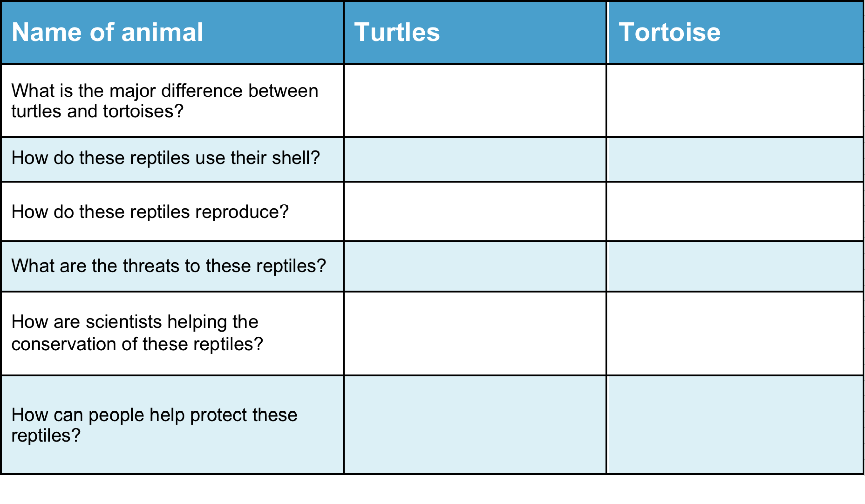Information for Teachers
Curriculum links
Australian Science Standards
BS (ACSSU73) Living things depend on each other and the environment to survive
GS (ACHASSK088) The importance of environments, including natural vegetation, to animals and people
NDS (ACSHE061) Ways in which scientists gather evidence for their ideas and develop explanations
UIS (ACSHE062) Science has contributed to a discussion about an issue such as loss of habitat for living things (human activity)
New Zealand Science Achievement Objectives
LW: The key structural features and functions involved in the life processes of plants and animals
NS: Scientists’ investigations are informed by current science theories and aim to collect evidence that will be interpreted through processes of logical argument
Helpful websites
You may want to direct your students to websites to help with their investigations.
Students can choose an animal with a shell on its back and search for the animal+shell.
How to search the internet
1 Keep your request short
Fewer words will give a more accurate search.
2 Choose exactly what you want
For example: Arctic Circle Climate
3 Use quotes
Double quotes around a set of words tell the search engine to consider those exact words in that exact order without any change. For example: “Arctic Circle Climate”
4 Use the plus sign (+)
If you add a plus sign (+) between words, the internet will search for all the words. For example: migrate+birds+whales+mammal
5 Use the minus sign (–) to say what you don’t want
Use a minus sign (–) to show words you do not want to appear in your results. For example: if you search for burrowing animals and do not want mammals in your search, –mammals will exclude mammals. Note that you need to put a space before the minus sign for the word to be excluded.
6 Be very clear about what you don’t want
Part 1
Ask questions and make predictions
After reading Shells on their Backs, you may have many questions about reptiles that grow a protective shell.
List your questions
- Compare your list with questions that others have.
- Choose a question you would like to investigate.
- You can work alone, with a partner, or in a small group.
You may want to investigate one or more of these questions
Q1. Why do some reptiles have a protective shell?
Q2. How do they move around with this shell?
Q3. What is the major difference between turtles and tortoises?
Q4. Why are many of these reptiles endangered?
Go to Part 2 Plan and investigate →Part 2
Plan and investigate
Search the internet or books, or talk to people who can help you find the information you are looking for.
Your teacher may suggest suitable websites for further information.
Go to Part 3 Record and analyse data →Part 3
Record and analyse data
Find a way of recording your information that will allow you to see any patterns in the data.
Data Chart for Shells on their Backs
[download and change to suit your information]
 Download Chart
Download Chart
Go to Part 4 Evaluate the information →
Part 4
Evaluate the information
1. Look over the information you have gathered and the patterns
you have found.
• How do all these reptiles reproduce?
• Where do they reproduce?
• What happens after their young are hatched?
2. Search for other patterns.
• Why are some species of tortoises and turtles seriously endangered?
• How are scientists using technologies to assist in the conservation of tortoises and turtles?
3. Make notes about what you find.
Go to Part 5 Communicate and share ideas →Part 5
Communicate and share ideas
Look over all the information that you have gathered in your investigation.
What are the most important ideas about turtles and tortoises?
Make a chart showing the most important ideas.
 Download Chart
Download Chart
← Return to menu
